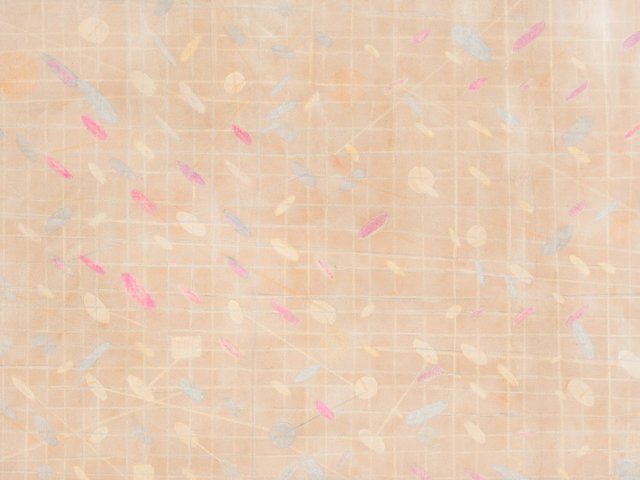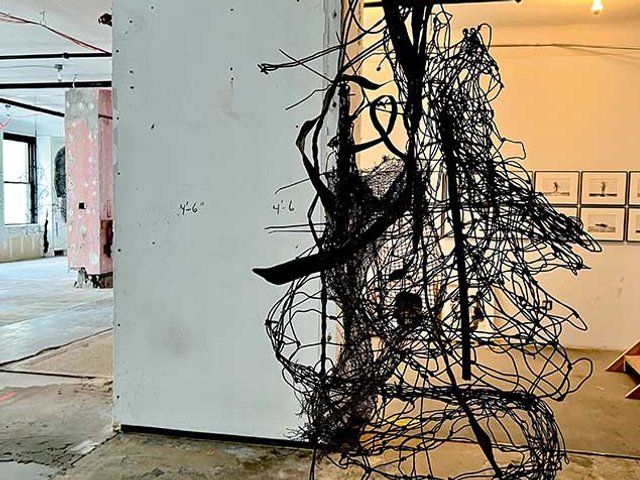One of the few Chelsea stalwarts resisting the urge to franchise itself in other cities or parts of New York is 303, the gallery founded in 1984 by Lisa Spellman. At the time she was living in a loft at 303 Park Avenue South, an unfashionable address in what is now the very fashionable Flatiron District.
Spellman moved the gallery with the times, first to the East Village and then SoHo before landing in Chelsea, all the while remaining independent and fiercely loyal to an international roster of artists that currently includes Sue Williams, Doug Aitken, Hans-Peter Feldman, Alicja Kwade, Tala Madani, Jeppe Hein and two dozen more. In media-speak it’s “mid-size”, but it’s also a stronghold of personal representation in an eco-system that has pretty much remade itself on the corporate empire model.
303 Gallery does not call outsize attention to itself by throwing lavish parties—it exerts a quieter influence
The gallery does not call outsize attention to itself by throwing lavish parties or hiring a team of publicists. It exerts a quieter influence. So, I was a little surprised at the size of the crowd that showed up for 303’s debut show with New York artist Esteban Jefferson.
The first two people I saw at his opening were the dealer Tanya Leighton and Goldsmiths Centre for Contemporary Art director Sarah McCrory. Each had travelled 3,000 miles from opposite directions just for this evening. That seemed like a lot of firepower for a 33-year-old artist new to the market. I was wrong about that. Leighton had already held two exhibitions by Jefferson at her galleries in Los Angeles and Berlin. Next autumn McCrory will do another in London.
But how did they know about Jefferson to begin with? “Matthew Higgs,” was their joint reply.
Higgs, who was not present, is the British-born director of White Columns, New York’s oldest non-profit “alternative” space, and the springboard to many a solid, even stellar, art career. It was Higgs who launched Jefferson with a solo show in late 2019, and lured Spellman, Leighton and McCrory to Jefferson’s carefully staged presentation of sepia-toned, seemingly haunted paintings and a video that took on 19th-century colonialist presentation practices exemplified by works in the lobby of the Petit Palais in Paris.
The artist, who is bi-racial, homed in on unattributed busts of anonymous Black men that were stuck behind the ticket desk, without the abundant information in wall texts given to the rest of the collection. That sent a message to contemporary viewers that Jefferson wanted others to get without hitting them over the head with it.
Layers of meaning
The dealers were so impressed by his installation, which featured a faux marble setting, that they signed him up straight away. The show drew positive reviews. Despite pandemic restrictions, Leighton brought the same exhibition to her galleries in 2020. First sales were to museums.
Just as striking at the 303 opening was the number of other artists present who do not show with the gallery. What brought Jon Kessler? Jefferson had been his MFA student at Columbia University. And Alexis Rockman? After his graduation, Jefferson was his studio assistant. Peter McGough swanned in to give the younger artist a paternal hug. Evidently, Jefferson had assisted him too. After that, I hardly needed to ask Kon Trubkovich why he was there. Yup. Studio assistant. Loyalty also brought a woman who introduced herself as Sara Kapcels, for whom Jefferson never worked. She is his mother. “I think you can stick to painting,” she told her confident son, thrilled by the reception he was getting from his hometown.
“Esteban’s really smart, and a very good artist,” said the artist Jon Kessler. “Yeah,” artist Alexis Rockman chimed in. “He got the best of both of us and got rid of all the crap.”
I could see what he meant. The new paintings are at once stripped down and layered in both meaning and execution. To make them, Jefferson turned to the flags and equestrian monuments (George Washington, Theodore Roosevelt) that he saw defaced or removed during or after the Black Lives Matter protests that followed George Floyd’s murder in Minneapolis on 25 May 2020. (The date is the show’s title.) Painted in grisaille, with only the flags and graffitied monuments rendered in colour, his canvases look like colouring books that are not wholly filled in. Complicity had taken a back seat to self-empowerment.
“What I like best is that they look unfinished,” Kessler noted. The effect invites closer examination, which reveals shifting registers and minutely detailed abstractions with painterly as well as political narratives.
What I liked best was this whole scene. It was very satisfying to see that the old method of bringing on new artists—through friendships and apprenticeships and the belief of mentors and dealers, rather than hype and the hard sell—still works wonders.
• Esteban Jefferson, 303 Gallery, New York, until 25 February




